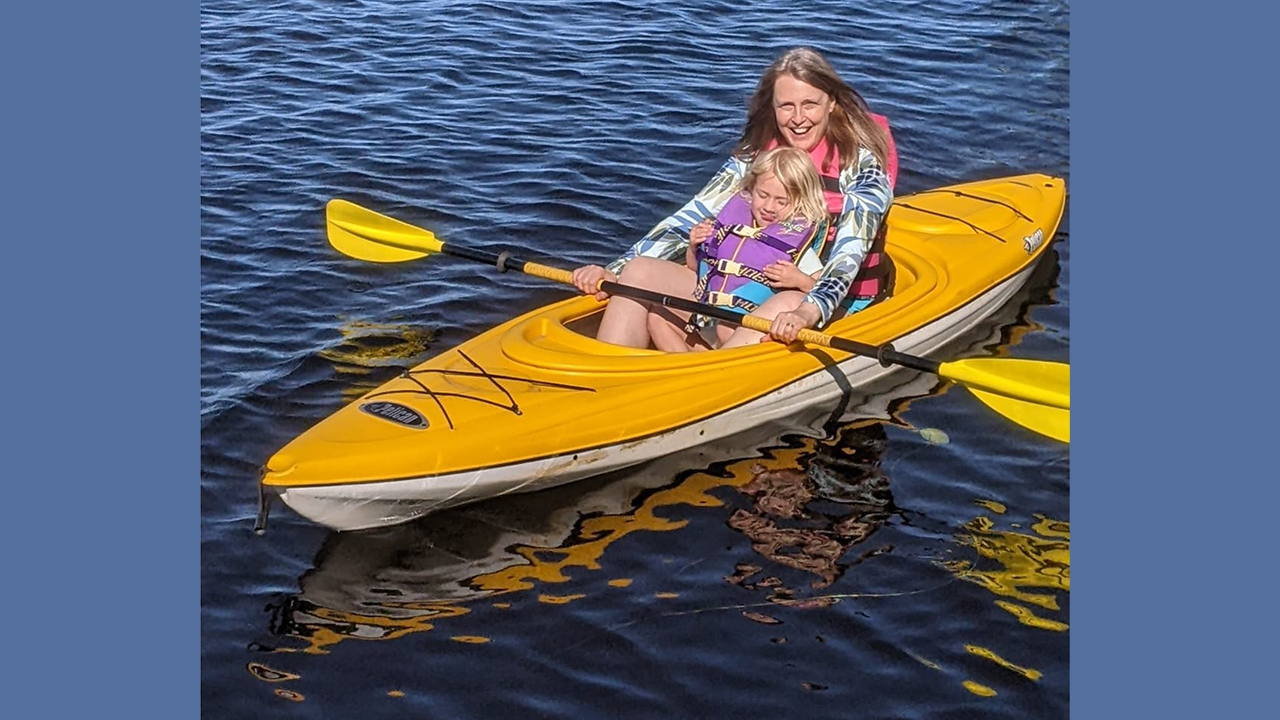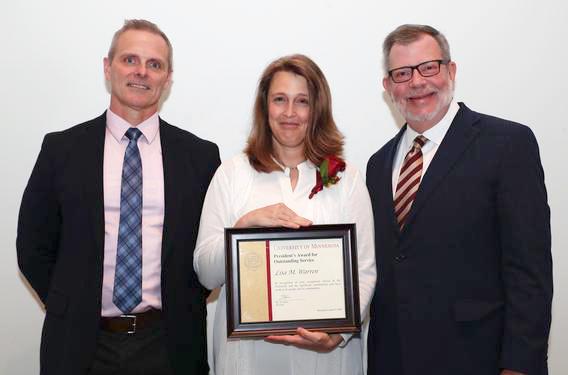
After 36 years working for the University of Minnesota, Lisa Warren, who currently serves as assistant vice president for OVPR, will be retiring in December. She has been a key part of operations in OVPR since 2000 and will be greatly missed! Take a moment to learn more about Lisa’s decades-long career at the University in the following Q&A.
How long have you been at the University and what positions have you held?
I started in February of 1987 in Mechanical Engineering (ME) as an accounts specialist typing (with an actual typewriter) purchase orders and travel reimbursements. I took over the payroll specialist duties in 1988 and processed payroll and effort certification for ME until 1990.
In 1990, I started in research administration working for the Office of Research and Technology Transfer Administration (the earlier name for the combined Sponsored Projects Administration, Sponsored Financial Reporting, and Technology Commercialization functions) submitting financial reports and invoicing for reimbursement of expenses on grants. This office was later split and the financial reporting function was assigned to the Controller's Office. I had already moved to the Controller's Office to work for Financial Systems Support as a business analyst. This position evolved to project management during several significant University initiatives: Buttoning Up CUFS (the University's financial system), Grants Management (Exceptional Status), and Y2K conversion.
The University created a new institutional research compliance office as part of the Grants Management initiative and the plan to get the University off of the National Institutes of Health (NIH) exceptional status list. As a result, in February 2000, I changed jobs and moved from the West Bank Office Building to Johnston Hall to join the Oversight, Analysis, and Reporting (OAR) office, which included the administration of the new Certified Approver Program. In this role, I coordinated the new research compliance function and developed web reporting that enabled faculty to oversee their grant projects online.
In May 2005, the University hired R. Timothy Mulcahy as its next vice president for research. The chief of staff to the previous VPR decided to retire, and I was asked to serve as the chief of staff and continue as the director of OAR. The split role lasted for one year, and after that, I became OVPR's full time chief of staff in 2006. Since coming to work for OVPR, I have served eight vice presidents for research and as chief of staff for six VPRs.
Christine Maziar (2000–2003)
David Hamilton (interim VPR 2003–2005)
Tim Mulcahy (2005–2012)
Brian Herman (2013–2016)
Al Levine (2017–2018)
Christopher Cramer (2018–2021)
Michael Oakes (2021–2022)
Shashank Priya (2022–present)
What accomplishments are you most proud of during your time at the University?
- Working and raising my family while completing my undergraduate and master's degrees
- Being part of a research community that grew its research portfolio from $200 million to $1.2 billion in new research annually
- Developing long-term relationships and partnerships with trusted colleagues who were there for each other, working collaboratively and with a common purpose
- Winning the 2019 President's Award for Outstanding Service

What are some of the biggest challenges you faced during your time at the University?
In 1997, the University was fined $32 million by the NIH, labeled with an Exceptional Status, and given a corrective action plan that required new technology (EGMS and Financial Forms Nirvana), programs (RCR, CA Program, and COI), and grants management policies that did not exist prior. I was involved with the work to resolve and remove the Exceptional Status, which required the University to transform its entire grants management processes between the years 1997 and 2002. Over that period, I served in numerous roles implementing the University's first financial reports on the web, creating a new compliance office, implementing the Certified Approver Program, and developing oversight reporting functions.
I also worked on Advancing Human Research Protections from 2014 to 2016. This involved managing an implementation plan to resolve 63 recommendations from an external review committee and gaining Board of Regents approval.
And then there was COVID-19 which, for many of us, was the greatest challenge any of us had faced in our lifetimes. Ten years prior I had helped create the Pandemic Influenza Response measures on behalf of the VPR, which provided the foundation for our COVID-19 response work and my liaison role with the Health Emergency Response Office. I served on the systemwide COVID-19 infrastructure work team that developed both the “sunset” continuity of operations plan and the following “sunrise” plan.
What are some of the biggest changes you’ve seen over the course of your career?
- Introduction of computers into the workplace
- Creation of the internet and the University migration to that technology
- The evolution of 1990s Office of Research and Technology Transfer Administration (about 100 employees) to today’s OVPR (more than 800 employees)
- Research expenditures increasing from $200 million in 1990 to $1.2 billion today
Any fun memories you’d like to share?
It's hard to pick! The University has touched almost every aspect of my life. I have many, many fun memories from my jobs, student experience, and family connections to the University. My earliest memory of the U is from 1975 when my mom worked for the U and brought me to work with her on weekends. She left me in her Moos Tower office where, from a window, I was able to watch the Gopher football team and marching band play in Memorial Stadium, which has since been torn down and replaced by the McNamara Alumni Center. My mom was busy that day tending to her mice colonies, which were supporting several dental school research projects. Little did I know that one day I would be a research administrator and understand the importance of those mice from a very different view.
What are you looking forward to in retirement?
- Being on my own schedule, doing what I want, and being lazy (the latter will be hard for me)
- More time playing with family and friends and being in nature
- Enjoying our cabin in northern Minnesota, traveling, and staying active
- I would like to live and grow more through experiences
Any other parting thoughts?
The best part of my work at the U has been the people that I have been so fortunate to work alongside. There are many long-time friends and colleagues who I will miss, though many of them have beat me to this retirement milestone. I hope my legacy will be that I left things better for the U than I found them.